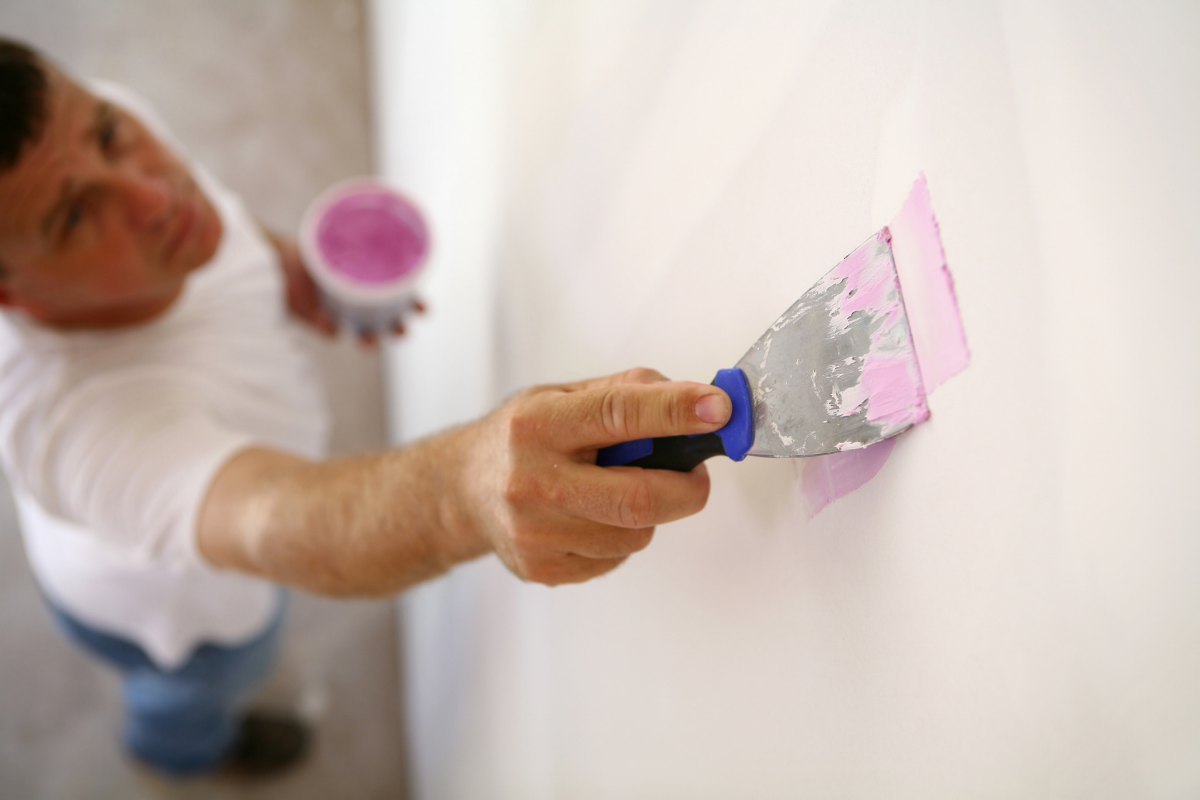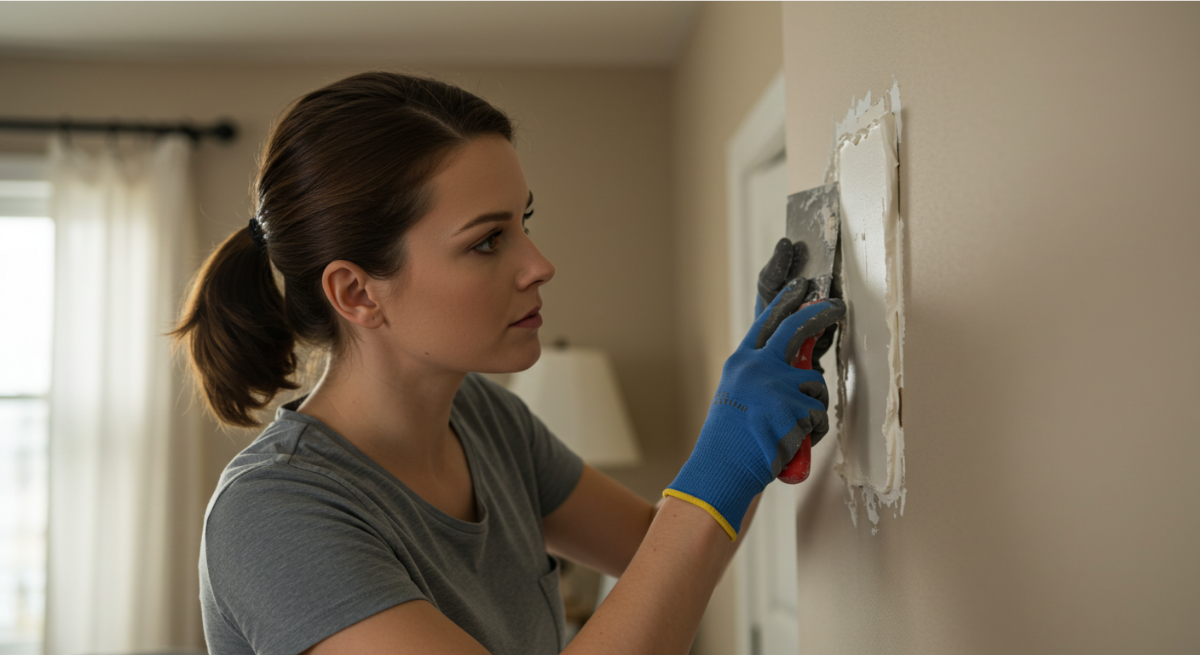If you’ve ever removed a wall anchor, bumped furniture too hard, or hung a shelf slightly wrong, you’ve likely needed to figure out how to patch a wall. Good news: this repair is easy, cheap, and one of the most satisfying beginner DIY skills you can learn.
In this guide, I’ll show you exactly how to patch a wall, from tiny nail holes to bigger dents that need mesh patches.
What You’ll Need to Patch a Wall
Fixing drywall doesn’t require a big toolbox. Most of what you need is simple and budget-friendly:
For small wall patches:
- Lightweight spackle or joint compound
- 2″–6″ putty knife
- Sanding sponge or sandpaper
- Damp cloth
- Small paint touch-up kit
For larger holes:
- Self-adhesive drywall patch
- Utility knife
- Joint compound
- Primer and wall paint
How to Patch a Small Hole in a Wall
Small holes—like nails, screws, or anchors—are the most common. Here’s how to patch a wall quickly and cleanly:
- Wipe the area clean with a damp cloth
- Apply spackle with a putty knife, feathering out the edges
- Let it dry (1–2 hours is typical)
- Sand smooth with a sponge
- Touch up with paint using a small brush or sponge applicator
Pro tip: Use a color-changing spackle like DAP DryDex. It goes on pink and dries white, so you know when it’s ready to sand.
How to Patch a Large Hole in Drywall
For holes bigger than a quarter, you’ll want to use a drywall patch. Here’s what to do:
- Cut a clean, square hole using a utility knife
- Apply a self-adhesive mesh or metal patch
- Spread joint compound over the patch in thin layers
- Let each layer dry, then sand it smooth
- Prime the area before painting
Don’t skip priming! Unprimed drywall patches will absorb paint and leave a blotchy finish.
Take a look at Lowe’s and their video guide on patching and repairs.

Spackle or Joint Compound
Choosing the right material helps avoid overwork. Here’s how they compare:
| Spackle | Joint Compound |
|---|---|
| Best for nail holes | Best for large patches |
| Dries in 1 hour | Takes 24+ hours in layers |
| Easy for beginners | Requires more sanding |
Still unsure? Start with spackle. You can always switch if needed.
Recommended Wall Repair Tools
These are the exact tools I use to patch walls in my home.
- DAP DryDex Spackling
Goes on pink, dries white. Makes timing easy. - Putty Knife Set
Multiple sizes, flexible blades for smooth finishes. - Sanding Sponges
Gentle, reusable, and great for tight spots. - Paint Touch-Up Kit
For clean finishes without roller mess.
Common Questions About Patching Walls
Can I use toothpaste to fill a hole?
No. It dries unevenly, shrinks, and doesn’t hold paint well.
Do I need to prime before painting over a patch?
Yes, for anything larger than a nail hole. Unprimed patches soak up paint and look dull.
What if my wall has texture?
Use a texture spray (available at box stores) or dab with a sponge to mimic the wall finish.
What’s Next After You Patch a Wall?
Wall patched? Time to make use of that space.
👉 How to Hang a Shelf
👉 How to Use Wall Anchors
👉 Tools for New Homeowners



